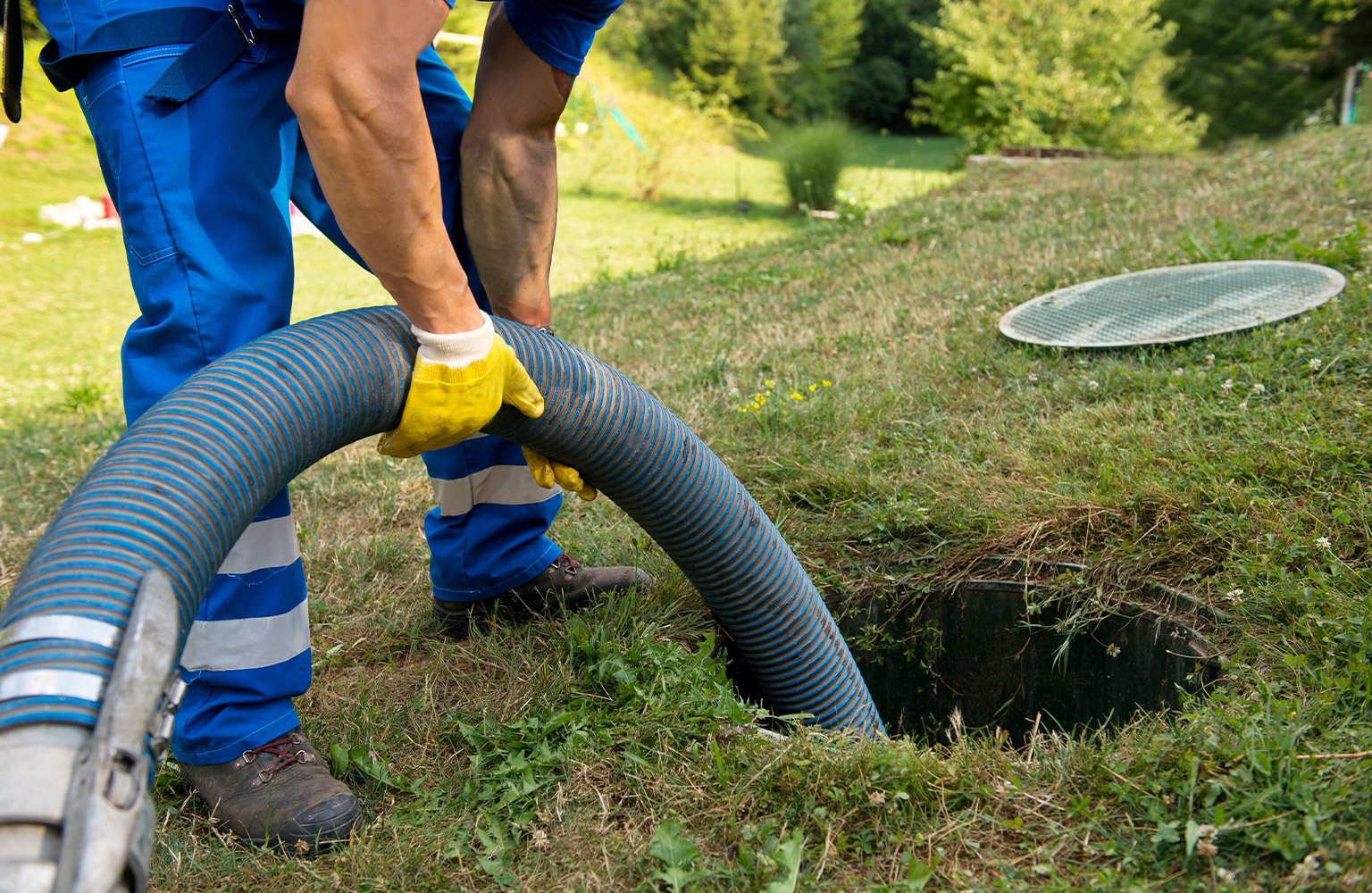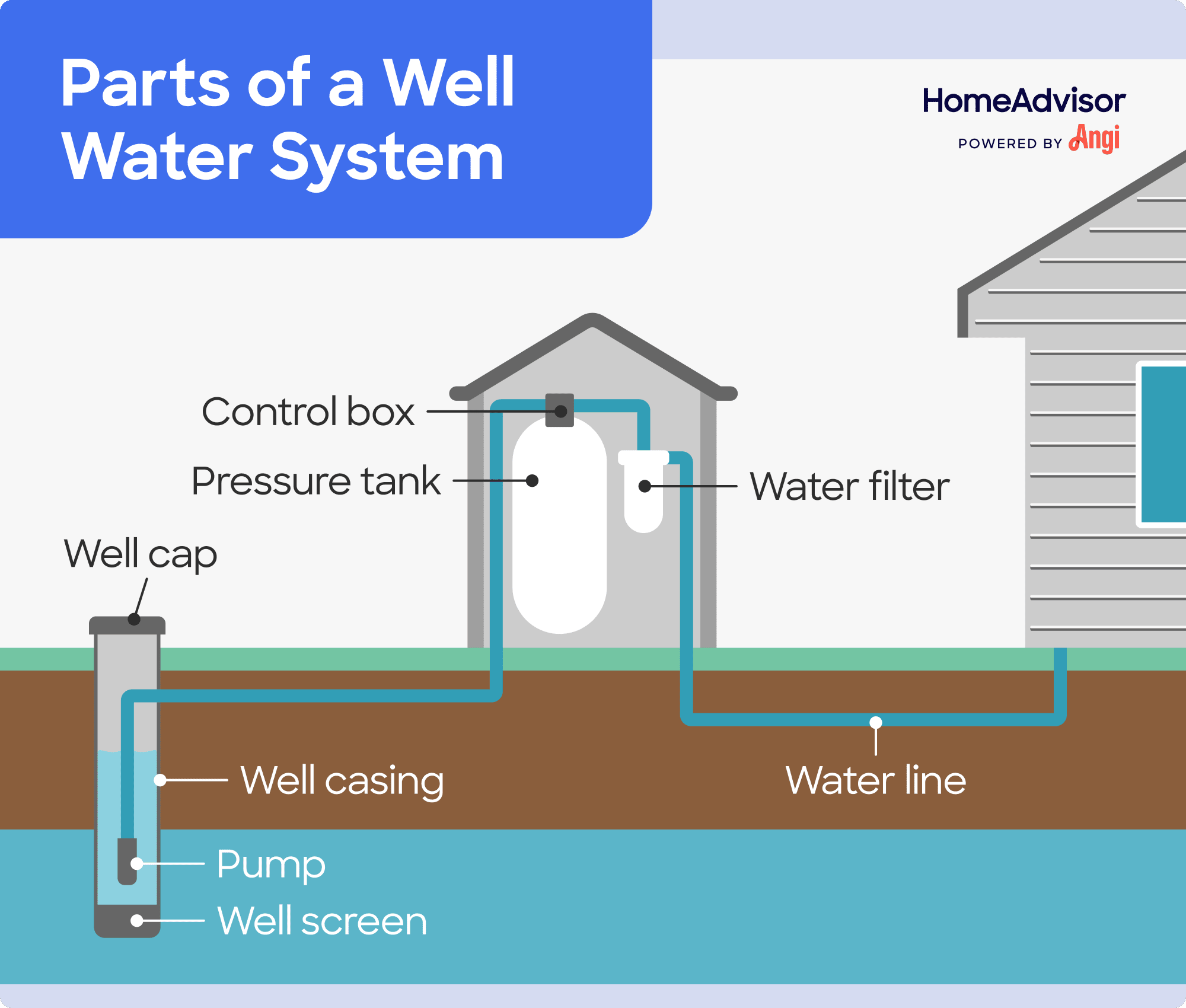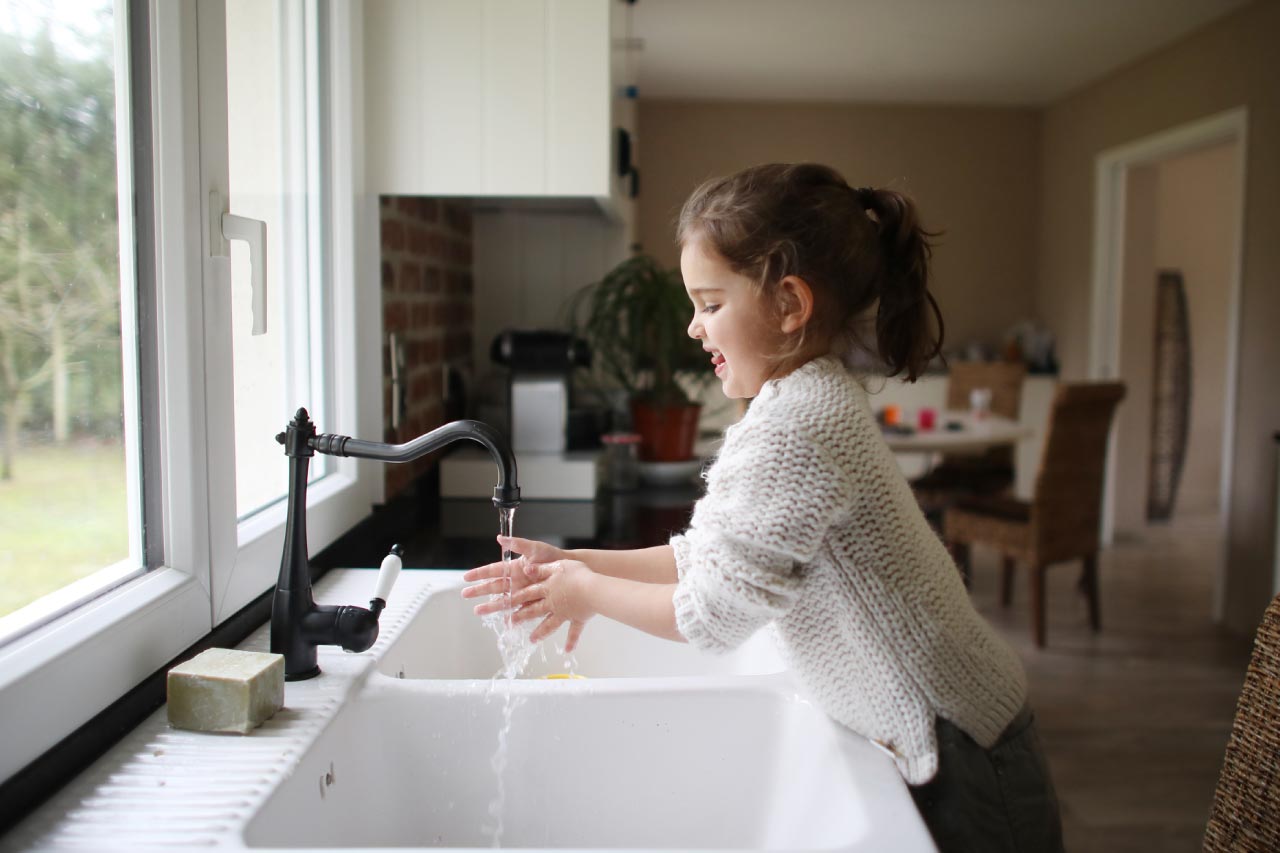
Wondering who to call for septic problems? Learn when to hire plumbers vs septic pros, warning signs, and average repair and pumping costs
Well pump repair costs an average of $973


For most homeowners, well pump repairs cost between $373 and $1,622 with an average cost of $973.
Depending on the part that needs repairing, you can expect to spend $10 to $500 per part.
Half of your budget will go toward labor at $50 per hour, with a minimum house call fee of $100 to $150.
Common issues involve the well pump pressure switch, leaky pipes, faulty capacitors, or pressure tank problems.
Hiring a well pump repair professional is essential for ensuring safety, proper repairs, and efficient functioning.
This article was updated using automation technology and thoroughly reviewed for accuracy by HomeAdvisor Editor Ryan Noonan.
Well pump repair costs for homeowners average $973, ranging from $373 to $1,622. The actual cost depends on factors like your location, pump size, and components. Regular maintenance can help reduce the frequency of repairs, saving you money over time. Hiring a professional ensures your well continues to function efficiently.

To figure out how much you'll pay to repair your well pump, consider these key cost factors.
The cost to repair your well pump depends on which parts are malfunctioning. Essential components like the pressure switch, foot valve, and motor start capacitor keep your well pump running smoothly. These parts can wear out over time and might need repair or replacement during your pump's lifespan.
Here are some common parts and their associated repair costs (including labor):
Pressure Switch ($120–$175): The pressure switch controls your water pressure. If it fails, your pump might not turn on or off properly, affecting your water flow. You may need to replace this part every few years due to normal wear and tear.
Foot Valve ($150–$300): The foot valve prevents backflow of water into the well. A faulty foot valve can cause the pump to lose prime, stopping it from functioning. Replacement is essential for pump operation, and the part may wear out over time, especially in wells with sediment.
Motor Start Capacitor ($100–$150): The motor start capacitor provides the initial energy boost to start the pump's motor. Without it, the pump may fail to start. Capacitors can fail due to electrical issues or age and may need occasional replacement.
Control Box ($200–$500): The control box houses electrical components that manage the pump's operation. A malfunctioning control box can cause the pump to operate improperly or not at all. Replacing it is essential and may be required if electrical components fail.
Pump Sleeve ($150–$400): The pump sleeve protects the motor from external elements. Damage to the sleeve can expose the motor to debris, leading to failure. Repair is essential to prolong pump life.
Other components, such as the pressure gauge, well ejector, pitless adapter, and jet pumps, may also require repair or replacement to ensure the well pump operates efficiently.
The table below breaks down the costs of the different components for well pumps, including labor.
| Component | Cost Including Labor |
|---|---|
| Pressure gauge | $100–$175 |
| Pressure switch | $120–$175 |
| Motor start capacitor | $100–$150 |
| Pump sleeve | $150–$400 |
| Foot valve | $150–$300 |
| Wall ejector | $150–$500 |
| Control box | $200–$500 |
| Pitless adapter | $150–$450 |
| Shallow well jet pump | $200–$500 |
| Deep well jet pump | $400–$800 |
The size and type of well pump you have affects how much your well pump repair costs. The average costs listed here are for parts alone and do not include labor or any additional materials that may be needed for proper installation:
Shallow Well Jet Pumps: $200 to $500
Deep Well Jet Pumps: $400 to $800
Your geographic location can impact both the cost of materials and the hourly labor rate of plumbers in your area. In general, locations with a higher cost of living will correspond with a higher overall well repair cost, but note that homes with wells are usually in more rural areas. Find the largest city near you to determine your regional well pump repair cost.
| City | Average Cost Range |
|---|---|
| Denver, CO | $1,210 |
| Houston, TX | $630 |
| New York, NY | $1,000 |
| Chicago, IL | $980 |
| Miami, FL | $400 |
Labor costs to repair a well pump run $50 per hour on average, but you should also budget for a minimum flat house call fee of $100 to $150. The callout rate almost always includes the first one or two hours of labor. Weekend and emergency (after-hours) rates are usually double, at $100 per hour. Some local well pump companies charge a flat rate rather than by the hour. This generally works out to about 50% of the total project price.
You'll likely spend less replacing multiple parts at once, which you can easily identify with an annual well inspection.
During a well pump inspection, your contractor will examine your entire system and perform a series of plumbing and electrical tests. These inspections can help avoid costly water pump failures and high weekend and emergency services rates.
Should you repair or replace your well pump? This depends on the extent of the problem and its age. Because a well pump lasts about 15 years, you may want to replace it instead of repairing it if it’s near the end of its life cycle.
However, replacing a well pump is often much more expensive than repairing it. On average, a well pump replacement costs an average of $970 to $2,800.
Not sure if your well pump needs repair or replacement? Here are some common signs to look out for.
If you turn on the faucet and no water comes out, or you flush the toilet but the tank doesn't refill, your well pump might be the issue. Before you call a plumber, double-check that there isn't a city-wide water shut-off.
While no water at all is an obvious sign of well pump issues, you should also pay attention to the water pressure. If your shower suddenly provides less water pressure, you may need a plumber to diagnose the problem. Plumbers charge between $45 and $200 per hour.
If your faucet spits air when you turn it on, and the air continues to spray out with the water, there could be something wrong with the air bladder. Alternatively, it could mean you need to drill your well deeper to sit fully below the water table, which can be expensive. Well drilling costs $15 to $25 per foot of depth.
Listen for unusual sounds from the pressure tank and the well pump itself. If you suddenly notice a new sound you haven’t heard before, that could mean something is malfunctioning. For example, fast clicking in your pressure tank could indicate a strain on the motor.
Your well pump shouldn’t have to run constantly to provide water to your home. If it’s always running, contact a professional for repairs. The issue could be due to a leak, so it’s important to address it quickly.
Pay attention to how your water looks, tastes, and smells. If there's any change or you notice sand or silt in the water, this could indicate a failing water pump. For your safety, don't drink the water. Wait until a well pump professional has completed repairs.
Well pumps run on electricity. If you notice a sudden surge in your power bill, the water pump could be to blame, though there are plenty of other potential culprits, like an inefficient air conditioner.
Your well pump works hard, so it's normal for it to need repairs or even a replacement over time. To help you budget for this expense, keep these money-saving tips in mind:
Ask for detailed estimates from at least three local well pump companies to compare pricing.
Invest in annual well inspections to identify minor issues before they escalate into bigger problems.
Consider signing a service contract with a local pro for regular inspections and to secure lower pricing.
When your well pump has issues, weigh the pros and cons of repair versus replacement. Replacement may cost more upfront, but it could make more sense overall.
Hire only licensed professionals in your area who are knowledgeable about local building codes and safety guidelines.
Ask about warranties or guarantees on parts and labor if the well pump repairs do not fully address the issue.
DIY well pump repair is not recommended, as this project involves many parts and components and requires specialized plumbing knowledge. It’s also important to be aware of the safety risks that come with performing well pump repairs on your own. For proper repairs and optimal well pump functioning, hire a professional well pump company to handle the job for you.
No place is more important than your home, which is why HomeAdvisor connects homeowners with local pros to transform their houses into homes they love. To help homeowners prepare for their next project, HomeAdvisor provides readers with accurate cost data and follows strict editorial guidelines. We surveyed thousands of real customers about their project costs to develop the pricing data you see, so you can make the best decisions for you and your home. We pair this data with research from reputable sources, including the U.S. Bureau of Labor Statistics, academic journals, market studies, and interviews with industry experts—all to ensure our prices reflect real-world projects.
From average costs to expert advice, get all the answers you need to get your job done.

Wondering who to call for septic problems? Learn when to hire plumbers vs septic pros, warning signs, and average repair and pumping costs

Budget for septic tank repair costs based on factors including parts, materials, labor, ongoing maintenance costs, and more.

When calculating the cost to pump a septic tank, you need to consider the size of the tank, how often it needs to be pumped, and the maintenance of the tank.

Use this guide to budget for a septic system inspection based on cost factors such as inspection type, accessibility, and additional septic services.

If you need to replace your well pump, you should budget based on the well pump type, size, and labor rates in your area.